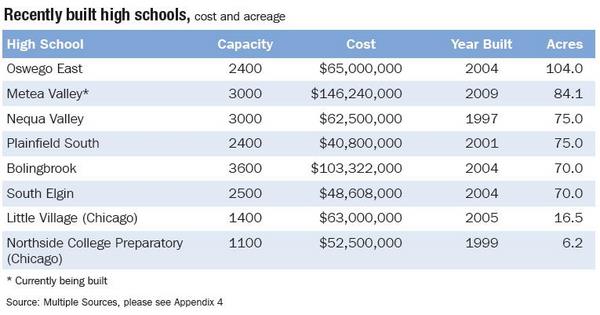Appendix 2
Section 000.204 - CALCULATIONS
000.204.010 Criteria for Determining School Site.
The following criteria shall govern the calculation of school site:
A. Requirement and Population Ratio. The ultimate estimated number of students to be generated by the residential subdivision or development shall be the relevant demand unit, and shall be directly related to the amount of land required for a school site. The school site requirement shall be determined by obtaining the product of the following: (1) estimated number of students to be served in each school classification divided by the (2) maximum recommended number of students to be served in each such school classification as established in this Ordinance multiplied by the (3) recommended number of acres for a school site of each school classification as established in this Ordinance. The product thereof shall be the acres of land deemed needed to have sufficient school site land to serve the estimated increased number of students in each such school classification. The school site cash fee shall be the dollar amount equal to the product of the number of acres required for school site times the fair market value of land per acre established in this Ordinance.
B. School Classification and Size of School Site. School classifications and the size of school sites within the Village shall be determined in accordance with the following criteria:

Appendix 3
Table 3 Information Sources
Municipal Ordinances referenced:
Carpentersville
http://municipalcodes.lexisnexis.com/codes/carpentersville/
Elgin
http://www.sterlingcodifiers.com/IL/Elgin/index.htm
Grayslake
http://www.villageofgrayslake.com/pdf/Village%20Code/Title%2016-%20Subdivisions.pdf
Joliet
http://www.cityofjoliet.info/City-Government/documents/SUBREGS040406.pdf
Manhattan
http://sterling.webiness.com/codebook/index.php?book_id=358
Matteson
http://www.villageofmatteson.org/departments/villageclerk/pdf/Ordinances/Ordinances/155.PDF
New Lenox
http://www.municode.com/resources/gateway.asp?pid=14158&sid=13
Oswego
http://www.oswegoil.org/building-zoning/zoning-ordinance.pdf
Palatine
http://www.palatine.il.us/publications/Village%20Code/Appendix%20B.pdf
St. Charles
http://www.ci.st-charles.il.us/codebook/title-16/T16-CH32.html#110
Appendix 4
Table 4 Information Sources
- Neuqua Valley High School
- Indian Prairie School District #204
- Northside College Preparatory (Chicago)
- National School Boards Association 2001 http://www.learningbydesign.biz/2001/projects/northside.pdf
- Plainfield South High School
-
Healy Snyder Bender & Associates
http://www.isbe.state.il.us/construction/pdf/Plainfield202.pdf - Bolingbrook High School
-
School Planning and Management and College Planning and Management Education Design
http://educationdesignshowcase.com/view.esiml?pid=42&lastsearch=grade%255Fid%3D7%26page%3D3 - South Elgin High School
-
School Planning and Management and College Planning and Management Education Design Showcase
http://educationdesignshowcase.com/view.esiml?pid=66&lastsearch=grade%255Fid%3D7%26page%3D4 - Oswego East High School
-
Kluber, Skahan + Associates
http://www.learningbydesign.biz/2004/projects/oswego-east.pdf
Little Village High School (Chicago) -
Architects OWP/P
http://www.owpp.com/content.cfm/little_village_high_school - Metea Valley**
-
Indian Praire School District 204
http://www.ipsd.org/Uploads/news_17332_1.pdf
** Currently under construction